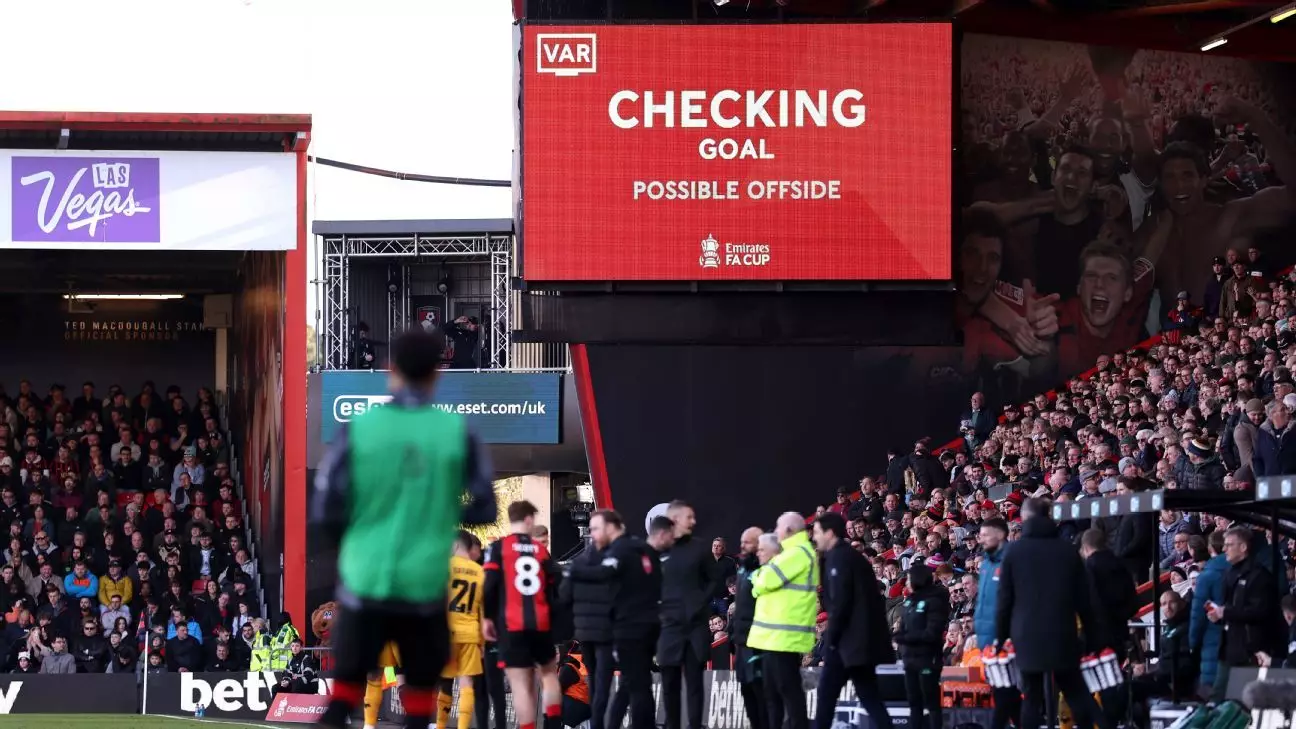The Premier League is poised to revolutionize the way offside decisions are made with the introduction of semi-automated VAR offside technology (SAOT) slated for implementation starting Matchweek 32, which will occur over the weekend of April 12-14. This landmark decision comes almost exactly a year after clubs collectively agreed on its development, showcasing the Premier League’s commitment to enhancing the accuracy and efficiency of officiating in football. The anticipation surrounding this technology has been palpable, owing to the tumultuous history of VAR since its inception, and it presents a seminal moment for a league that prides itself on maintaining a competitive edge in global football.
The Road to Implementation: Challenges and Delays
Originally, SAOT was expected to debut after an international break in 2024, but owing to a series of setbacks during the testing phase, its rollout was postponed. Tony Scholes, the Premier League’s chief football officer, acknowledged this tumultuous journey, noting that “significant progress” had been made in recent weeks. The backstory reveals the intricate dance between innovation and execution—while the promise of cutting-edge technology was evident, the actual translation into effective game-day use proved more complex.
The earlier use of SAOT in the FA Cup rounds further highlights the growing pains associated with the technology, as seen in the match between Bournemouth and Wolverhampton Wanderers, which generated the longest VAR review in English football history lasting an astonishing eight minutes. Such scenarios amplify concerns about the practicality of this high-tech solution in live games, questioning whether innovations designed to hasten decision-making might inadvertently lead to prolonged interruptions.
Why the Premier League’s Approach May Be Flawed
The development of a unique SAOT raises eyebrows, especially when contrasted with other major leagues that have already seamlessly adopted similar technologies. Critics point out that while Premier League officials tout their system as the “best” and “most accurate,” the truth remains that their progress is slower relative to peers like Serie A and LaLiga. These leagues have already integrated SAOT, reacting swiftly to early-season VAR mishaps that drove the need for improvement. The League’s decision to forgo pre-existing, tested solutions in favor of developing something in-house sparks debate about whether this was the most efficient course of action.
This hesitance could also be attributed to a lack of external collaboration. While FIFA and UEFA have made strides by integrating additional technology, such as the chip inside the ball utilized in the World Cup and Champions League, the Premier League’s independent approach puts it at a disadvantage. The unwillingness to explore partnerships with established technology firms might stem from a desire for self-reliance but risks trading off superior accuracy and efficiency for a less tested solution.
The Uncertain Accuracy of the New System
The ongoing controversies regarding the accuracy of SAOT also cannot be ignored. While the Premier League claims an average reduction of 31 seconds in offside reviews, instances of uncertainty—like Robert Lewandowski’s disallowed goal in LaLiga—cast doubt on these assertions. In a sport where precision can dictate the outcome of title races or relegations, any inconsistency in the application of technology can lead to extremely negative repercussions and erode fan trust in the officiating process.
Moreover, the reluctance to implement chip technology—largely due to Adidas’ ownership of its patent—could prove detrimental. As the game evolves, so too do the expectations of fans and players for error-free officiating. The insistence on not using the best available technology, if it comes at the cost of accuracy, may merely postpone rather than eliminate uproar among players and supporters regarding contentious decisions.
The Future of VAR: Hope or Hurdle?
As the Premier League gears up to launch SAOT, the overarching anticipation among fans and analysts reveals the complex duality of hope and skepticism. While this technological advancement holds the promise of refining the officiating experience and ensuring fair play, it must simultaneously address legitimate concerns around delays and accuracy in decision-making. The right balance must be struck between embracing innovation and ensuring reliability to maintain the integrity of the game.
If the Premier League can harness the potentials of SAOT while learning from past adversities in the VAR experience, it may indeed pave the way for a brave new era in football, elevating both the sport and its officiating to new heights. Still, it compels us to ask: will these changes result in the thoughtful evolution of technology in the game, or are we merely witnessing another cycle of hype without adequate substance?

Leave a Reply